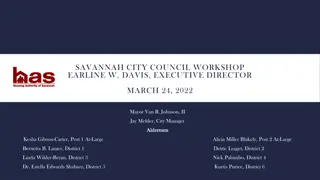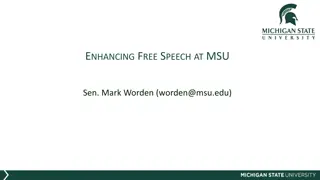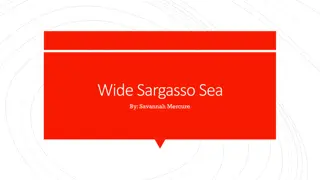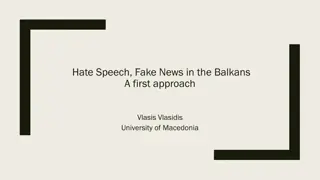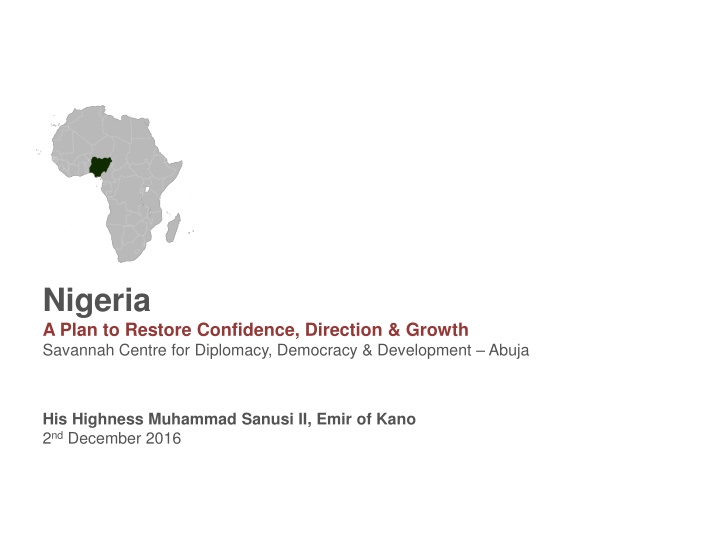
Nigeria's Plan for Restoring Confidence, Direction, and Growth
Discover the insightful plan laid out by His Highness Muhammad Sanusi II, Emir of Kano, to restore confidence and direction in Nigeria's economy. Explore the key factors shaping the current crisis and the shift towards investment as the primary source of growth in the absence of previous drivers. Uncover the two pillars of Africa Rising - commodity exports and rising debt - and their impact on the continent's economic landscape.
Download Presentation

Please find below an Image/Link to download the presentation.
The content on the website is provided AS IS for your information and personal use only. It may not be sold, licensed, or shared on other websites without obtaining consent from the author. If you encounter any issues during the download, it is possible that the publisher has removed the file from their server.
You are allowed to download the files provided on this website for personal or commercial use, subject to the condition that they are used lawfully. All files are the property of their respective owners.
The content on the website is provided AS IS for your information and personal use only. It may not be sold, licensed, or shared on other websites without obtaining consent from the author.
E N D
Presentation Transcript
Nigeria A Plan to Restore Confidence, Direction & Growth Savannah Centre for Diplomacy, Democracy & Development Abuja His Highness Muhammad Sanusi II, Emir of Kano 2nd December 2016
Background & History Why is this crisis different than the last one? The years of Africa Rising were driven by two major factors, neither of which is still in existence today: A dramatic rise in the purchasing power of raw commodities A rapid increase in public sector borrowing, used to stimulate consumption Absent these two factors, growth can only come through investment. Why? For any given economy there are only three sources of growth: Consumption Investment (Net) Exports Public consumption cannot grow without increasing revenues or leverage Private consumption cannot grow without rising wages or tax cuts Oil exports cannot grow without regulatory certainty and/or price rises This leaves investment as the only viable option for growth v Muhammad Sanusi II | December 2016 2
Two Pillars of Africa Rising 1st pillar commodity exports The terms of trade in other words, the purchasing power of commodity exports were a big part of the Africa Rising narrative, and the lost decades before it. Terms of Trade Index Rebased 2000 = 100 400 350 "Africa Rising" "Hopeless Continent" 300 Angola Nigeria Rwanda Zambia Ghana Egypt Ethiopia C te d'Ivoire Morocco Uganda Kenya Botswana Mauritius In 2002, it would have taken 19 barrels of oil to import a single Sanyo flip phone, at that time a mid- range phone. By 2008, a phone from the same range could be imported with less than one barrel of oil. 250 v 200 150 100 Yet this process did not benefit all economies evenly. Many of the East African economies saw no material change in their terms of trade but still grew strongly. 50 0 1980 1982 1984 1986 1988 1990 1992 1994 1996 1998 2000 2002 2004 2006 2008 2010 2012 Source: World Bank Development Indicators Muhammad Sanusi II | December 2016 3
Two Pillars of Africa Rising 2nd pillar rising debt Gross Debt/GDP, % The Great De-levering Gross Debt/GDP, % The Quiet Re-levering 250 140 2008 2002 2008 2015 120 200 100 150 80 60 100 40 50 20 0 0 Comoros Gabon Ethiopia Ghana Burundi Gabon Angola Tanzania Mali CAR Comoros Uganda Guinea Uganda Ghana Burundi Burkina Faso C te d'Ivoire Seychelles Mali Ethiopia C te d'Ivoire Rwanda Senegal Angola Tanzania CAR Kenya The Gambia Burkina Faso The Gambia DR Congo Guinea Seychelles Nigeria Cameroon Senegal Kenya Cameroon Madagascar Mozambique Sierra Leone Togo Togo Rep Congo DR Congo Nigeria Rwanda Mozambique Sierra Leone Madagascar Rep Congo v Source: IMF World Economic Outlook (WEO) Heading into the Global Financial Crisis (GFC) Sovereign balance sheets had been cleaned up by Paris Club and HIPC debt relief initiatives When the crisis hit, there was scope for both monetary and fiscal stimulus. New debts were raised on growing local currency markets. This maintained growth at artificially high levels and contributed to a (mistaken) belief that Africa had decoupled . The decoupling myth was only true to the extent that governments could keep taking on more debts. Today, balance sheets are much more stretched. Muhammad Sanusi II | December 2016 4
Two Pillars of Africa Rising Where did all this debt go? New borrowings were recycled into higher recurrent expenditure, helping to sustain and prolong the consumption boom which had been started by rising commodity prices. Real* Public Sector Wage Bills (2005 = 100) *adjusted for inflation 1,200 Ghana Nigeria Ethiopia Kenya 1,000 800 For many countries, the growth in public wage bills accelerated precisely as the commodity revenues were getting hit by the crisis. v 600 400 In Nigeria, the public sector wage bill went up from N443bn in 2005 to N1,659bn in 2012 , driven by a 53% increase in civil servants wages in 2010. 200 0 2005 2006 2007 2008 2009 2010 2011 2012 2013 2014 In Ghana, the public sector wage expended by a factor of 10x in real terms in 10 years. Then, the hangover came Source: Haver, National central banks Muhammad Sanusi II | December 2016 5
The New Normal: 2-Speed Africa No longer one tide lifting all boats With the two major pillars of Africa Rising no longer in play, what will drive growth going forward? Real GDP Growth % Change y/y 10.0 Instead of one Africa Rising we will most likely see a 2-speed continent where some economies growth at twice the regional average, and others are basically stagnant. 8.0 Non-Commodity Africa Emerging Asia Commodity Africa MENA Emerging Europe LatAm & Caribbean Developed World 6.0 v 4.0 In fact, the non-commodity group of African countries is expected to be the fastest growing in the world, even ahead of Asia. 2.0 0.0 What are the features of these economies, and what are they doing so differently? -2.0 2010 2012 2014 2016 2018 2020 Source: IMF WEO Muhammad Sanusi II | December 2016 6
The New Normal: 2-Speed Africa In an era of lower commodity prices, what still works? The common characteristics of the fast- growing group are: Total Investment/GDP, % (public + private) 40.0 Investment-driven instead of commodity- dependent; Capital recipients rather than capital exporters Coherently-planned rather than free-for-all capitalist Ethiopia Uganda Rwanda Ghana Kenya Egypt Angola Nigeria 30.0 v 20.0 The experience of East Africa shows that the investment-driven model can deliver high, relatively inclusive growth. 10.0 This kind of growth requires neither commodity revenues nor unsustainable levels of public debt. So why is this model not accessible to Nigeria? 0.0 2000 2002 2004 2006 2008 2010 2012 Source: World Development Indicators Muhammad Sanusi II | December 2016 7
Problems With the Current Policy Agenda Why must Nigeria be Africa s laggard rather than its leader? No one can deny that the Buhari Administration inherited serious problems. But are its current policies the right ones to fix these problems? If we accept the conclusion of the first part of the presentation, namely that: The government balance sheet is stretched; And investment is the key to growth Why has the Federal Government pinned its hope of a recovery on a strategy of: Massive fiscal expansion; And an FX policy that deters investment? v Muhammad Sanusi II | December 2016 8
Problems With the Current Policy Agenda Part I: The limits of fiscal stimulus Federal Government spending accounts for just 5.7% of GDP, and one quarter of this is for debt service alone. The role of government spending in the broader economy is minor. GDP vs FGN Public Spending Rebased 2005 = 100 500 Recurrent Expenditure Capital Expenditure Nominal GDP 400 This is particularly true of public capex: while the economy has quadrupled in nominal terms since 2005, and the population has grown by over 40 million, capex has barely changed. 300 v 200 There is much talk about raising non-oil revenues, but the tough measures (like tax increases) are not being taken. 100 0 Q405 Q406 Q407 Q408 Q409 Q410 Q411 Q412 Q413 Q414 Q415 The best ever out-turn for non-oil revenues was N779bn in 2014. This would be enough to fund 13% of the 2016 budget. Source: Budget Office of the Federation Muhammad Sanusi II | December 2016 9
Problems With the Current Policy Agenda Part I: The limits of fiscal stimulus (cont d) Even if the government managed to increase revenue significantly, it would still need re- prioritise spending towards capex. GDP/Capita US$ (nominal) Tax Revenues/Capita US$ (nominal) Development Spending/Capita US$ (nominal) Angola Botswana C te d'Ivoire Egypt Ethiopia Ghana Kenya Mauritius Morocco Nigeria Tanzania Uganda Zambia 4,100 6,041 1,315 3,740 687 1,340 1,388 9,218 3,079 2,743 942 620 1,350 1,012 2,702 211 438 101 239 232 1,738 559 117 119 276 684 89 89 82 58 129 194 169 17 49 43 79 Across all 3 levels of government, Nigeria collected just US$117 per capita in 2015, and invested US$17. Kenya, with half of Nigeria s level of wealth on paper, collected almost twice as much in taxes and invested over 7x as much. v 85 172 Source: IMF WEO, National central banks, Haver If Nigeria is going to adopt an investment-driven model, it cannot rely on the public sector alone. Muhammad Sanusi II | December 2016 10
Problems With the Current Policy Agenda Part II: the FX regime Nigeria introduced bold FX reforms in the summer of 2016, and then completely failed to implement them. The gap between design and implementation has ruined credibility. After announcing a (managed) flotation of the naira in June, the CBN instead implemented a hard peg (at a lower level). v The FX market is now split into 4 different segments: the CBN rate (N305/US$), FMDQ (N315/US$, but not printed since 28 Nov), NIFEX (N315/US$) and the black market rate (N480/US$). The black market rate is the only segment with any real price discovery, and hence perceptions of fair value are high-jacked by where this market trades. Source: Bloomberg, AbokiFX Muhammad Sanusi II | December 2016 11
Problems With the Current Policy Agenda Part II: the FX regime (cont d) REER-Implied Over/Under Valuation Adjustment Required to Bring REER = 100 Fair value of the naira is not the issue. The current crisis of confidence in NGN/US$ comes from a lack of transparency and functionality. 75 60 45 30 Under- valued On a trade and inflation weighted basis, the naira has gone from one of the most over-valued currencies in the world to one that is now under valued. 15 0 v -15 Over- valued -30 -45 This suggest that Nigeria is comparatively cheap and indeed much cheaper than many countries with a long history of attracting capital from abroad. -60 Tunisia Turkey Denmark Ghana Canada Ukraine Brazil Gabon Uganda Zambia New Zealand Seychelles Vietnam Mexico C te d'Ivoire Angola Sweden Japan Chile Philippines Kenya Sri Lanka UK Nigeria Cambodia Lao P.D.R. Thailand Uruguay Korea DR Congo South Africa Bulgaria Mongolia Mozamb. Source: Bruegel, Bloomberg Muhammad Sanusi II | December 2016 12
Problems With the Current Policy Mix Part II: the FX regime (cont d) Real Interest Rates, % (measured against 364-day T-bill or closest euqivalent) Interest rates are not the issue. In tandem with its currency reforms, the CBN has restored positive real interest rates. Frontier Markets Africa The changes have been dramatic: as recently as January, real interest rates were deeply negative in Nigeria. 10 v However, local currency returns are now among the most attractive in Africa, as well as the wider frontier universe. 0 Under a more credible policy environment, this would help draw in capital from abroad, and incentivise locals with savings to keep their money onshore. -10 Tunisia Zambia Romania Ghana Vietnam Mauritius Botswana Tanzania Uganda Argentina Oman Mauritius Egypt Slovenia Estonia Morocco Egypt Croatia Nigeria Bahrain Bangladesh Sri Lanka Kenya Kenya Pakistan Lebanon Ukraine Jordan Mozambique Nigeria Kazakhstan Kuwait Serbia South Africa Lithuania Bulgaria Source: Haver, Bloomberg, Central banks Muhammad Sanusi II | December 2016 13
Problems With the Current Policy Mix Part II: the FX regime (cont d) Asset prices are not the issue. If anything they are exceeding attractive. Both P/B and P/E ratios are trading near record lows relative to their own 5-year range. MSCI Indices Current Price/Book and 5y Range (* indicates local index) 6.0 5.5 5.0 4.5 At a time when Global (and many EM) stocks have rarely been more expensive, Nigerian stocks almost never been so cheap. 4.0 3.5 v 3.0 2.5 2.0 The picture looks particularly out of sync for banks, where the sector is trading on a 1-year forward P/B ratio 0.5x while sector-wide ROEs for H1 2016 were 16.5%. 1.5 1.0 0.5 0.0 EM SAUDI Colombia EGYPT UAE Jordan* Peru ARGENTINA Oman* Botswana* World Ukraine Sri Lanka Bahrain Pakistan Kenya Mauritius Kuwait* FRONTIER Bangladesh Romania Kazakhstan Ghana* NIGERIA Zimbabwe* Morocco FM Asia Thailand Tunisia FM Africa Philippines Philippines Lebanon* Vietnam Qatar* TURKEY Why are the policies that keep things this way being allowed to continue? Source: Bloomberg Muhammad Sanusi II | December 2016 14
How Bad Policies Are Perpetuated The CBN-FGN Nexus The CBN-FGN relationship is no longer independent. CBN Claims on Federal Government (Naira billions) 5,000 In fact one could argue their relationship has become unhealthy. CBN claims on the FGN now top N4.7trn equal to almost 50% of the FGN s total domestic debts. Loans to SOEs (Non-financials) Overdrafts Converted Bonds T-Bills & Rediscounts 4,500 4,000 3,500 3,000 v This is a clear violation of the Central Bank Act of 2007 (Section 38.2) which caps advances to the FGN at 5% of last year s revenues. The overdrafts alone are equal to more than 10x that prescribed limit, and are growing every month. President Buhari 2,500 2,000 1,500 1,000 500 Has the CBN become the government s lender of last or first resort? 0 Jan-13 Jul-13 Jan-14 Jul-14 Jan-15 Jul-15 Jan-16 Jul-16 Source: Central Bank of Nigeria Muhammad Sanusi II | December 2016 15
The Deepening Macro Risks How policy gridlock is spilling over into the economy Real GDP Growth By Sector (% change y/y) Banking Sector NPLs (% of Gross Loans) Q2 2014 Q2 2015 Q2 2016 10.0 18.0 15.0 5.0 12.0 0.0 9.0 -5.0 Agriculture Industry Services 6.0 -10.0 3.0 v -15.0 0.0 Manuf. Oil & Gas Govt Q3 2014 Q4 2014 Q1 2015 Q2 2015 Q3 2015 Q4 2015 Q1 2016 Q2 2016 Q3 2016 Agriculture Commerce Construction Power Source: CBN, NBS Without the right policies to encourage investment which necessarily begin with the FX regime growth is unlikely to recover and may even continue to fall. In the absence of economic growth, the banking sector will find it hard to grow out of its asset quality issues, with NPLs already high and still rising. Rising NPLs continue to erode banks capital, yet new capital is very difficult to raise when the FX regime deters all investment into Nigeria. The FGN and CBN lack the resources for AMCON 2.0, and through their policies are pushing the cost of resolving the banking crisis onto the household sector. Muhammad Sanusi II | December 2016 16
The Deepening Macro Risks Following in Egypt s footstep s? As a strategically important country in the geopolitics of the Middle East, Egypt was able to resist market forces for years thanks to GCC support. Egypt Public Finances (Fiscal Years, in % of GDP) 40 0.0 35 -2.0 30 -4.0 But having exhausted all sources of concessional financing, it is now in the throes of a painful fiscal and macro adjustment, imposed by the IMF. +5.0 percentage points/GDP 25 -6.0 v 20 -8.0 15 -10.0 Revenues will need to be raised by +5pp of GDP (+50% in absolute terms); a new VAT (of 13%) is being imposed; central bank financing (historically 50% of the budget deficit) will likely be cut off; and new concessional loans will be subject to passing quarterly IMF reviews. 10 -12.0 5 -14.0 0 -16.0 2011/12 2012/13 2013/14 2014/15 2015/16 2016/17 Revenues (LHS) Expenditures (LHS) Balance (RHS) Is there where Nigeria is headed? Source: IMF Muhammad Sanusi II | December 2016 17
The Deepening Macro Risks Nigeria s wasted opportunity Nigeria s approach to managing its economic crisis is severely misguided: Fiscal policy is given all the attention but its potential impact is small FX policy is closed subject, yet it holds the (only) key to growth To understand the missed opportunity this represents, consider the example of Kenya: It has concessional debt equal to 38% of GDP (vs 2% in Nigeria) and has attracted investment inflows from abroad of 8-10% of GDP (vs 1-3% in Nigeria) over the past several years Scaled to Nigerian proportions, this would represent annual investment inflows of nearly US$40bn and an external debt carrying capacity of over US$150bn The reality is that in H1 2016, Nigeria has managed to raise just US$543mn in external concessional debt, and has received total investment inflows of US$663mn v If Kenya an economy 15% our size, with an exchange rate trading more than 40% above its fair value can raise more in concessional funding and inflows than us (in absolute terms), can we honestly say that our policies are working? Muhammad Sanusi II | December 2016 18
Solutions For 2016 and Beyond Short-term fixes Nigeria s should gear its policies towards attracting investment: Implement the June 2016 FX reforms, which were designed to unite the market in single, transparent rate, not to create four new ones. Focus on reducing FGN debt service through greater concessional borrowing rather than increasing its spending through CBN financing The bottom line: Until Nigeria signals a clear change in policy it will be difficult for it to restore credibility; Until credibility is restored, it will be difficult for it to attract investment (both from at home and abroad); Until investment picks up, it will be difficult for Nigeria to return to growth. v Muhammad Sanusi II | December 2016 19
Solutions For 2016 and Beyond Medium-term challenges, Part I: Power Nigeria s power sector reforms have stalled, and the sector is in danger of collapse unless urgent action is taken. What can the Federal and State governments do? Total Power Generation MegaWatts '000 5,000 4,000 (i) Petition for a specific debt raising programme to address unpaid arrears. Until this happens no new investment can take place. 3,000 v (ii) Raise public awareness about the necessity of cost-reflective tariffs, including the hike in 2016. 2,000 1,000 (iii) Ensure that DISCO owners make the stipulated investment in metering. Daily Generation 30-day Moving Average - Jan-15 Apr-15 Jul-15 Oct-15 Jan-16 Apr-16 Source: National Bureau of Statistics Muhammad Sanusi II | December 2016 20
Solutions For 2016 & Beyond Medium-term challenges, Part II: Industry Without greater power generation, Nigeria s import-substitution initiatives are meaningless African Countries Trade With China Exports & Imports/GDP, 2014 data 40.0 Imports (% of GDP) Exports (% of GDP) Exporters like China offer cheap credit, but in return demand access to local goods markets. Developing local manufacturing capacity is counter to their interests. 30.0 20.0 10.0 v With a couple exceptions (narrow commodity stories like RepCon & Angola) most African countries are net importers from China, and produce few finished goods of their own. 0.0 -10.0 -20.0 Gabon Ghana Uganda Ethiopia Zambia Angola Mauritius Tanzania Egypt Kenya Rep of Congo Seychelles Senegal Ivory Coast Nigeria Rwanda Mozambique The solution is not FX swaps with China which are in practice just a subsidy for Chinese exporters but direct investment into local manufacturing capacity. Source: IMF WEO, DOTS Muhammad Sanusi II | December 2016 21
Summary Points & Conclusion What lessons can we take away? The years of Africa Rising where one tide could lift all boats are behind us: the commodity cycle has turned, and government balance sheets are stretched. Sustainable, inclusive growth now depends on investment and in Nigeria s case, policy credibility will first need to be restored. The role that government can play in this process is defined by: (a) implementing the FX policy it already has; (b) creating the conditions for local manufacturing to develop v More specifically, it can: Allow price discovery to occur in the foreign exchange market Close the gap between FX policy design and implementation Shift the focus of fiscal policy towards reducing debt-servicing costs Firmly and unequivocally eliminate fuel subsidies Raise more concessional funding from abroad Capitalise NBET, so that arrears can be cleared Protect infant industry, specifically labour-intensive manufacturing Muhammad Sanusi II | December 2016 22
Thank You Q & A v Muhammad Sanusi II | December 2016 23

![Prevention and Combating of Hate Crimes and Hate Speech Bill [B.9B.2018]](/thumb/60513/prevention-and-combating-of-hate-crimes-and-hate-speech-bill-b-9b-2018.jpg)










